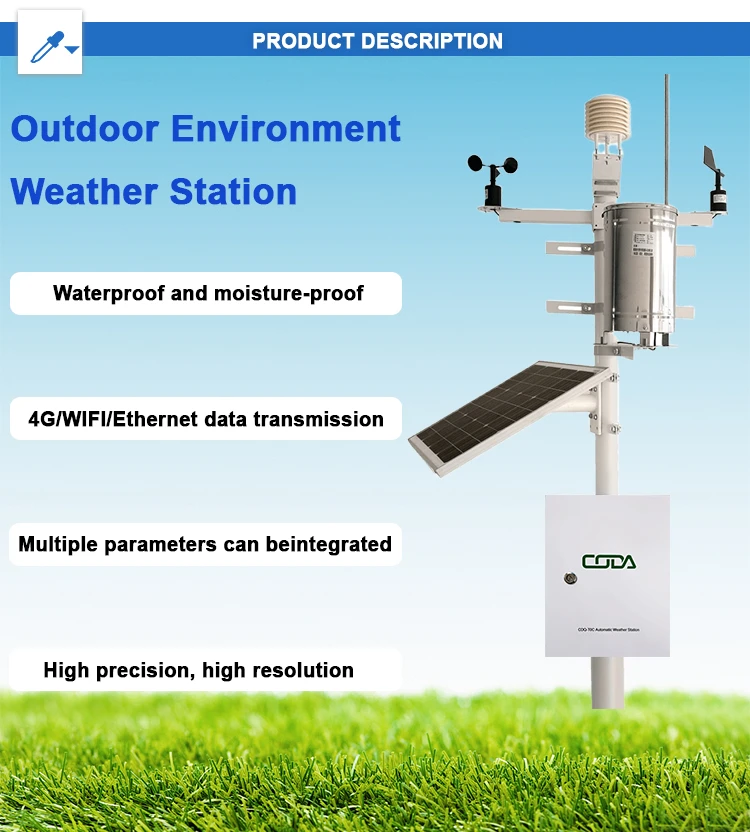The disadvantages of weather stations
How do you define a weather station?
An automatic weather station is a device that collects and sends weather information by itself. It has weather sensors, a microcomputer for data collection, a power supply, and a ventilation cover. It also includes a protective case, a weather observation stand, a communication module, and other parts. Below is a summary of the downsides of weather stations.
The automatic weather station can measure different weather factors. These include wind speed, wind direction, precipitation, air temperature, humidity, and light intensity. It creates reports on its own. It sends the data to a central station regularly.
This equipment is important for collecting weather data in different areas. Many sectors use it, such as weather forecasting, farming, transport, aviation, and maritime.
An automatic weather station is a device that can observe and record weather data on its own. It provides benefits like high accuracy, real-time monitoring, and easy data sharing. However, it also presents certain drawbacks.
disadvantages of weather stations:
1. Equipment malfunction and intricacy:
Technical complexity: An automatic weather station uses advanced technology and software. Its complex design makes repairs hard when problems happen. This means technicians need a higher skill level.
Vandalism and contamination can harm the automatic weather station and data loggers. This can lower the accuracy and reliability of the weather data collected.
2. Energy Reliance and Communication Challenges:
Energy reliance: Automatic weather stations need a steady power source. Power outages or unstable power can disrupt data collection and transmission.
Many automatic weather stations use solar power. However, these systems can have problems during long rainy periods or bad weather. This issue is worse in remote areas or places with weak power systems.
Disruptions in communication: Automated weather stations need a strong network to send data. Any interruptions or weak signals can slow down data delivery to the central station. This affects how fast and reliable the information is.
3. Financial Challenges:
Initial investment: Automatic weather stations can lower labor costs over time, but they are expensive at first. This includes costs for buying equipment, setting it up, and training staff. For groups or people with limited funds, this initial cost can be a big factor in deciding to buy.
Upkeep costs: Even with automated weather stations, you still need regular maintenance and occasional repairs. Include these costs in your overall financial plan.
4. Vast Data Volume:
Automated weather stations can collect data on many weather factors in real-time. This creates a lot of data. For systems with limited processing power, storing, processing, and analyzing this data can be a big challenge.
5. Maintenance and Calibration Requirements:
Automatic weather stations lower the need for manual work. However, they still need regular maintenance and calibration. This helps keep the data accurate over time. Sensors can drift due to environmental factors or long-term use.
6.Environmental Interference:
Electromagnetic interference and bad weather can impact how sensors work. Bad weather includes strong winds, heavy rain, and freezing temperatures. This is especially true if there is no proper protection in place.
7. Data Security and Privacy Concerns:
Automatic weather stations send data over networks. This makes them open to data interception or tampering. The risk grows if proper encryption is not used.
8. Regional Adaptation:
In certain remote or unique places, like polar regions or deserts, automatic weather stations may need special changes. This can make things more complex and costly.
Overview of Automatic Weather Station
Automatic Weather Stations have a network of sensors, data loggers, and communication units. They track weather conditions on their own. The system sends the data wirelessly or through wires to a central database. These systems aim to reduce the need for human work.
They also make data collection more efficient and consistent. This makes them a key tool for weather monitoring and research. However, we must address the downsides of weather stations to fully realize the benefits of automatic weather stations.
